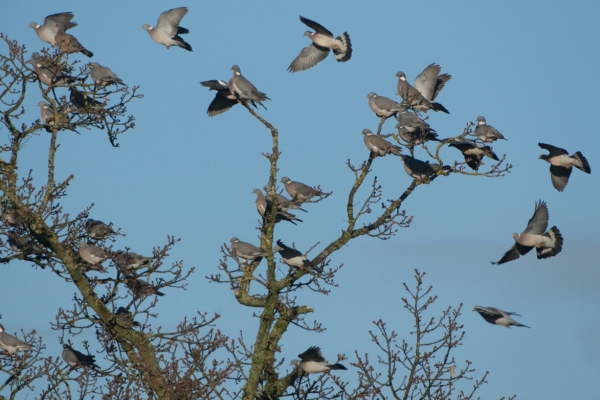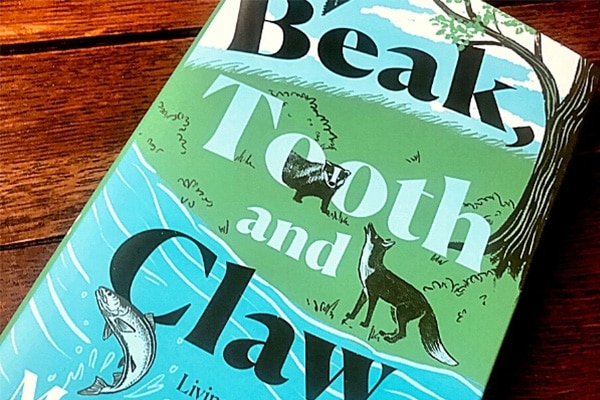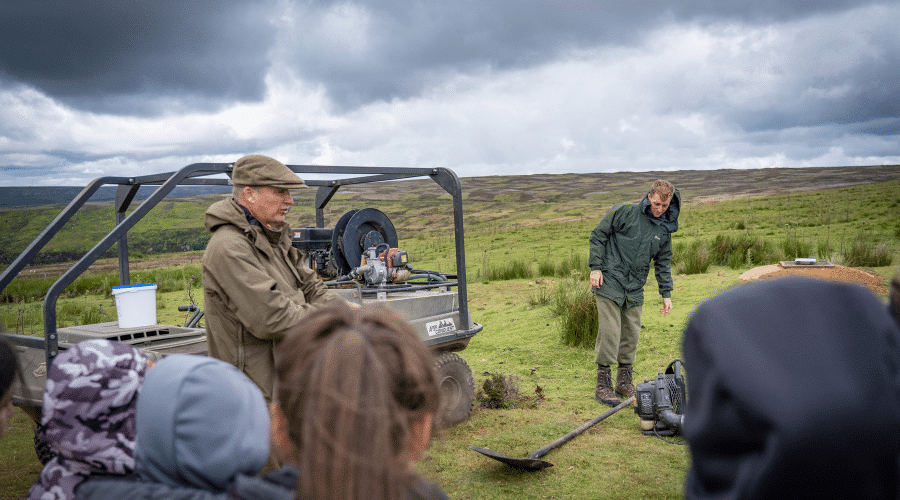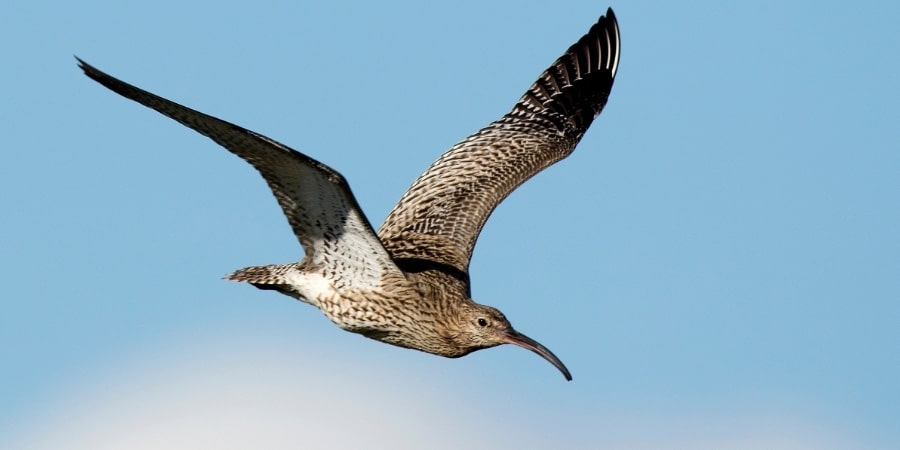
Flying the roost
BASC member Richard Hall shares his journey from clay shooting to the rewarding experience of roost shooting.
Get information on the legal shooting season for mammals and birds in the UK.
Apply for funding for your project or make a donation today
Comprehensive information and advice from our specialist firearms team.
Everything you need to know about shotgun, rifle and airgun ammunition.
Find our up-to-date information, advice and links to government resources.
Everything you need to know on firearms law and licensing.
All the latest news and advice on general licences and how they affect you.


I was prompted to read Mary Colwell’s latest book; ‘Beak, Tooth and Claw – Living with Predators in Britain after becoming aware of a social media spat which erupted following Mark Avery’s review of the same book a few weeks ago.
Unlike Mr Avery, I must confess I did not feel like ‘…throwing this book across the room several times as I was reading…’
I found the book to be eminently readable, highly informative and honestly reflective of Mary Colwell’s own position regarding degrees of tolerance people feel towards predators in Britain.
The storm stirred up by Mark Avery is still rumbling on.
The quite vicious and personal nature of the online altercation is a perfect illustration of how polarised the debate over predator control for conservation purposes has become.
Moreover, it demonstrates, how personality and ego have become more important to some than any conservation aims.
One camp – the ‘protectionists’ – is firmly entrenched in the doctrine that lethal control can never be justified. They would argue as such even when conserving species such as the curlew, the plight of which has been widely described as “most pressing bird conservation priority in the UK”.
Others, let’s call them the ‘pragmatists’, realise that lethal control is merely another tool in the practical conservationist’s box.
Unfortunately, there can be no winners in such an ideological conflict and only conservation, as well as a number of declining species, will be the losers.
Mary Colwell’s book isn’t a zoological textbook, this clearly wasn’t its remit and it’s all the better for it.
Instead, she strives to chronicle the historic, cultural and present-day attitudes to a range of British predators. These are neatly covered in their own chapters; fox, ravens and crows, badgers, buzzards and hen harriers, and so on.
The author travelled widely to research a spectrum of perspectives on the predators. The range included a lady who keeps orphaned foxes at home, to an anonymous ‘keeper’ whom she accompanies on a night-time foray to shoot a fox ‘to protect lapwing, snipe and curlew’ somewhere in the north of England.
The author openly admits to being highly conflicted when participating in this exercise and is clearly relieved when the fox doesn’t appear. This despite her acute awareness of the plight of several species of ground nesting birds, particularly the curlew. Mary Colwell is Chair of the Curlew Recovery Partnership, an organisation providing support to those engaged in curlew conservation.
In this, and throughout her book, I find Mary Colwell’s approach in covering a highly divisive issue, refreshingly honest and deserving of respect.
I felt that each species in the book was given a fair hearing, as were the ‘sides’ in the human/wildlife conflicts which the book also portrays.
The author steers a steady course between a range of thorny issues without becoming embroiled in the arguments. This is achieved while still presenting an interesting, informative and quite entertaining narrative about the subject matter.
I certainly learnt quite a few interesting facts from the book and would be happy to recommend it to anyone with an interest in predators in Britain, as well as the arguments for and against their management.
If I had to pick any issues with the book, then certain chapters, such as Ravens and Crows, felt a little lacking in balance. The genuine problems a superabundance of either corvid species can cause to both agriculture and threatened species was perhaps not highlighted strongly enough. However, this would be only a minor quibble.
Corvids are undoubtedly highly intelligent, social creatures. These traits are used as a reason not to control them by the protectionists. However, the other side of the coin means that they can be very adept at making a thorough nuisance of themselves.
Although there were a number of minor errors, these were magnified out of all proportion by Mark Avery in his damning review.
Mary Colwell’s presentation of the issues around driven grouse shooting and the hen harrier was, I felt, very well and fairly presented. I would go so far to say that it was even more balanced than the immediately preceding analysis of driven pheasant shooting.
The author concludes that finding consensus in such conflicts is far more difficult than taking sides and becoming entrenched in what, for some, is an attractive conflict.
Before I actually read the book, I had expected to disagree more with the general narrative.
Instead, I found myself in agreement with the portrayal of most, if not all, the species included, as well as the conflicts connected with each.
My only disappointment was that I had expected the narrative to lead to some sort of conclusion in the final chapter, entitled Hope in a Time of Extinction.
I also hoped for the possibility that Mary Colwell would make recommendations of how some of the more pressing conservation issues could be resolved, to at least provide some light at the end of the tunnel.
Perhaps the author felt that this was also not within the remit of her book and such conclusions may, in fact, be out of place in what is certainly a thought-provoking volume.
Is it possible to be a hard-line moderate? Mary Colwell certainly gives it a good try and deserves a degree of appreciation for doing so.
In this book, she provides a wide-ranging and informative narrative of our relationships with both existing British predators and perhaps a few which we don’t yet have to live with (lynx and wolves are mentioned in the chapter covering rewilding).
Her recounting of tracking wolves in the snow in Sweden, and hoping that the wolf she tracked would escape death in a planned cull, reminded me of my own experience in Russia. In my version, we followed fresh wolf tracks in the early morning snow close to a small Russian village where my then two-year-old daughter was still sound asleep.
Mary Colwell brilliantly captures the primeval sense of both awe and admiration all of us feel for predators. This is whether they conflict with our interests or not, and exist in close proximity to us in an ever more crowded world. I offer my respect to both.

BASC member Richard Hall shares his journey from clay shooting to the rewarding experience of roost shooting.

We are pleased to announce that Let’s Learn Moor, the UK’s largest upland education event will take place again this summer.

The Wildlife Habitat Charitable Trust has awarded a £75k grant to the Wildfowl & Wetlands Trust to help combat the curlew crisis in Southern England.
Sign up to our weekly newsletter and get all the latest updates straight to your inbox.
© 2025 British Association for Shooting and Conservation. Registered Office: Marford Mill, Rossett, Wrexham, LL12 0HL – Registered Society No: 28488R. BASC is a trading name of the British Association for Shooting and Conservation Limited which is authorised and regulated by the Financial Conduct Authority (FCA) under firm reference number 311937.
BASC Direct Ltd is an Introducer Appointed Representative of Agria Pet Insurance Ltd who administer the insurance and is authorised and regulated by the Financial Conduct Authority, Financial Services Register Number 496160. Agria Pet Insurance is registered and incorporated in England and Wales with registered number 04258783. Registered office: First Floor, Blue Leanie, Walton Street, Aylesbury, Buckinghamshire, HP21 7QW. Agria insurance policies are underwritten by Agria Försäkring.
If you have any questions or complaints about your BASC membership insurance cover, please email us. More information about resolving complaints can be found on the FCA website or on the EU ODR platform.